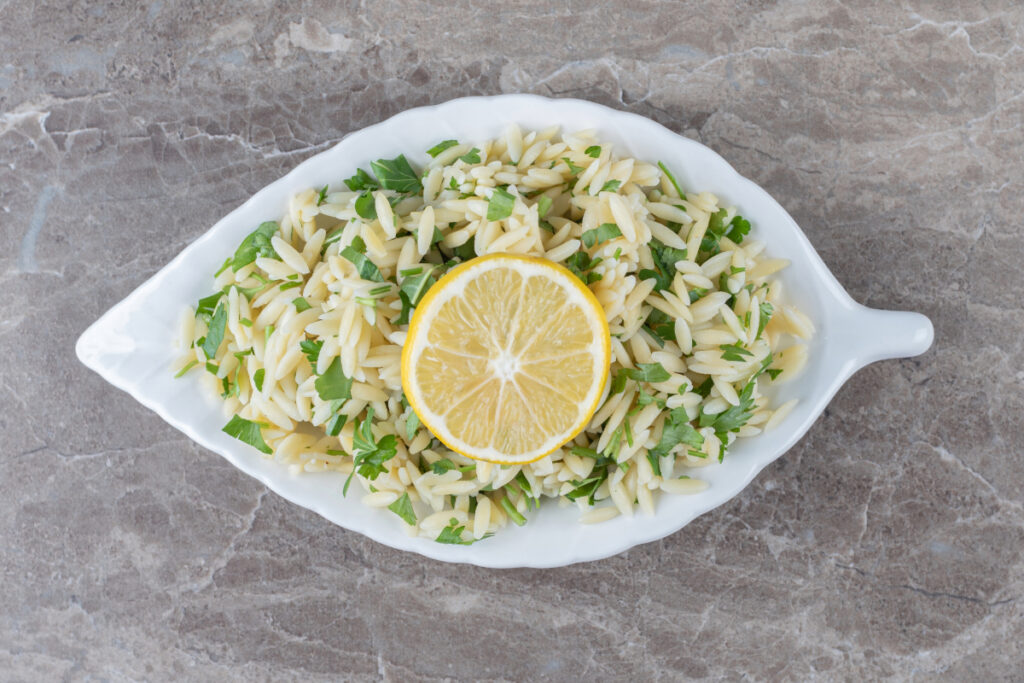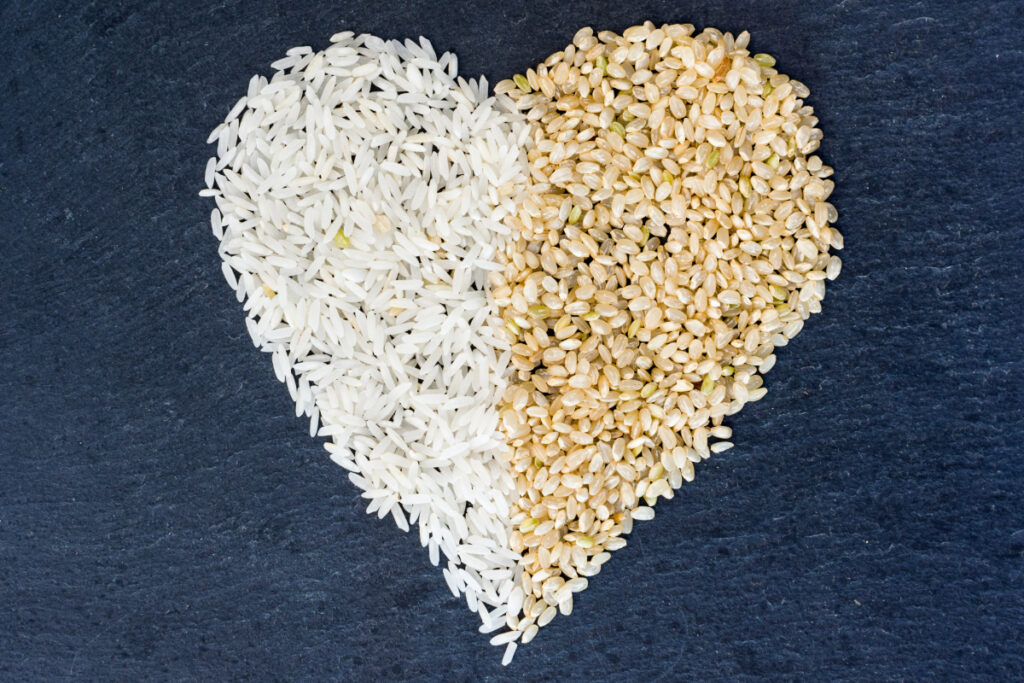When planning your meals, deciding between orzo and rice can be a pivotal choice for health-conscious individuals. While both options are versatile, their nutritional content and suitability for various diets differ. Let’s delve deeper into this topic to provide a comprehensive answer to the question, “Is orzo healthier than rice?”
Table of Contents
What Is Orzo?
Orzo is a pasta that mimics the shape and size of rice. Made from wheat flour, it is commonly used in Mediterranean and Italian cuisines. Unlike rice, which is a grain, orzo is classified as a type of pasta, enriched with nutrients like iron and folate to meet dietary needs.

Its versatility makes it a favorite in recipes like creamy soups, cold salads, and warm casseroles. If you love quick and delicious meals, consider trying this Marry Me Chicken Orzo Recipe for a creamy and satisfying dish.
Gluten Content in Orzo
Since orzo is made from wheat, it contains gluten, making it unsuitable for those with celiac disease or gluten intolerance. For gluten-free alternatives, rice is a better option, as highlighted by the Celiac Disease Foundation.
Is orzo healthier than rice? This is a common question for anyone comparing grains and pasta for health-conscious meals.
What Is Rice?
Rice, a staple food for billions of people, comes in various types, each with distinct flavors and nutritional profiles. These include:
- White Rice: A refined grain, stripped of its bran and germ layers for a softer texture.
- Brown Rice: A whole grain with higher fiber and essential nutrients.
- Wild Rice: A nutrient-rich option with a chewy texture and nutty flavor.
Rice is naturally gluten-free, making it an inclusive choice for diverse dietary requirements. Moreover, its global appeal spans dishes from sushi to pilafs and curries. For healthier variations, you can enhance rice dishes with nutritious toppings like those in the Ultimate Guide to Avocado Toast Seasoning.
Nutritional Comparison: Orzo vs. Rice

If you’ve ever wondered is orzo healthier than rice, you’re not alone—it’s a frequent debate among home cooks and nutritionists.
Let’s break down the facts to find out: Is orzo healthier than rice, and which one better fits your goals?
Macronutrients
Orzo and rice are both rich in carbohydrates, making them excellent energy sources. However, they differ in other areas:
- Calories: Orzo and rice have similar caloric content, but portion sizes can influence the total calorie count of a meal.
- Carbohydrates: Brown rice offers complex carbs that digest slower, providing sustained energy. Orzo, being a refined product, has simpler carbs.
- Protein: Orzo has a slight edge, with about 6 grams of protein per cup compared to rice’s 4 grams, making it a better choice for vegetarians seeking a protein boost.
Micronutrients
- Orzo: Often fortified with iron and B vitamins, it supports energy production and blood health.
- Brown Rice: Naturally rich in magnesium and selenium, promoting heart health and reducing inflammation.
Fiber Content
Fiber is essential for digestive health. Brown rice contains significantly more fiber than orzo, supporting regular digestion and preventing blood sugar spikes.
For more insights into the role of fiber, check out this Harvard Nutrition Source guide on carbohydrates and fiber.
Glycemic Index and Blood Sugar Impact
The glycemic index (GI) measures how quickly foods raise blood sugar levels. This is particularly important for individuals managing diabetes or seeking weight control.
- Orzo: Medium-to-high GI, depending on its preparation. It provides a quick energy boost but can lead to rapid blood sugar spikes.
- Rice: Brown rice and wild rice have lower GI values, offering a steadier energy release. White rice, however, has a high GI.
If you enjoy pairing rice with savory toppings, consider learning about the secret ingredient to crispy wings, which can complement a hearty rice dish.
Health Benefits and Suitability for Diets
Both orzo and rice have their unique benefits. Choosing between them depends on your health goals and dietary restrictions.
Weight Management
- Orzo: While higher in protein, it lacks the fiber content needed for prolonged satiety.
- Brown Rice: With its high fiber content, it keeps you fuller longer, aiding in weight management.
Dietary Compatibility
- Rice: Naturally gluten-free, rice is ideal for individuals with gluten intolerance or celiac disease.
- Orzo: A suitable option for those following vegetarian or high-protein diets but unsuitable for low-carb plans.
For those on a gluten-free diet, explore recipes like Crispy Chicken Wings Without Frying to pair with rice or other alternatives.
When planning a balanced diet, many people ask: Is orzo healthier than rice, especially in Mediterranean-style dishes?
Culinary Flexibility
One of the reasons orzo and rice are kitchen staples is their adaptability. Both can be used across a variety of cuisines.
Cooking with Orzo
Orzo’s tender pasta-like texture makes it perfect for:
- Creamy casseroles
- Cold salads with vinaigrettes
- Soups that require small, hearty additions
If you’re exploring orzo recipes, the Marry Me Chicken Orzo recipe is an excellent place to start.
Cooking with Rice
Rice pairs beautifully with:
- Curries and stews
- Asian-inspired stir-fries
- Mediterranean pilafs
For a healthy topping, consider using ideas from the Ultimate Guide to Avocado Toast Seasoning to add a twist to your rice dishes.
Environmental Impact
Sustainability is a growing concern when selecting ingredients. Rice cultivation, especially in regions requiring irrigation, has a larger carbon footprint compared to orzo production. However, sourcing sustainably grown rice can reduce environmental impacts.
For tips on sustainable eating, consider the World Resources Institute for actionable strategies.
Understanding is orzo healthier than rice depends on your dietary needs, cooking preferences, and portion sizes.
FAQs
1. Is orzo healthier than white rice?
Orzo offers more protein, but white rice is gluten-free and easier to digest for those with sensitivities.
2. Is orzo better for diabetics than rice?
No, whole-grain rice like brown rice has a lower glycemic index, making it more suitable for diabetics.
3. Can orzo replace rice in recipes?
Yes, orzo can substitute for rice in soups, salads, and casseroles, providing a slightly different texture.
4. Which has more fiber: orzo or brown rice?
Brown rice contains significantly more fiber, supporting better digestion and sustained energy release.
5. Is orzo gluten-free?
No, orzo is made from wheat and is unsuitable for gluten-free diets. Opt for rice as a safe alternative.
Final Verdict: Which Is Healthier?
The answer depends on your dietary needs:
- Choose orzo if you’re looking for a protein-rich, versatile pasta alternative.
- Opt for brown rice for its high fiber content, lower glycemic index, and gluten-free nature.
For those looking to experiment with both, integrating orzo into Mediterranean dishes and rice into Asian or Indian cuisines can provide variety and balance.
By blending insights into nutrition, health, and culinary uses, this guide aims to help you make informed dietary choices. Whether you’re pairing orzo with creamy sauces or enhancing rice with fresh toppings, both ingredients can play a significant role in your meals. Let your health goals and taste preferences lead the way!
